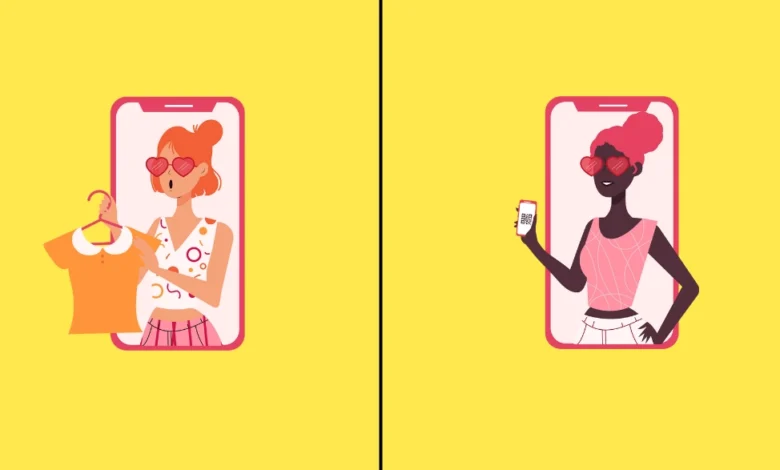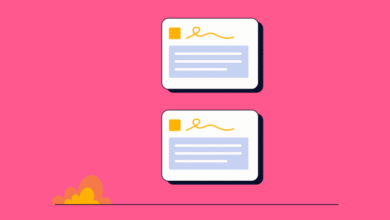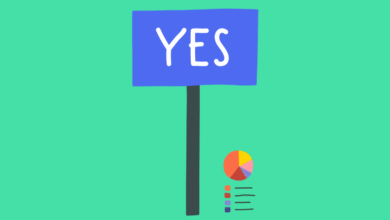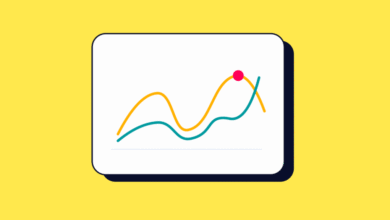
Targeting used to be everything. You’d slice your audience into neat little segments, serve them ultra-tailored ads, and watch the conversions roll in. But then came iOS14, privacy regulations, and Meta’s ever-evolving algorithm. Suddenly, the old rules stopped working.
Now, marketers face a big question: should you still build lookalike audiences or just go broad and let the algorithm decide?
It’s a fair dilemma. On one hand, lookalike targeting was once the golden ticket to scale – precise, efficient, and reliable. On the other, broad targeting promises reach and simplicity, with the machine doing the heavy lifting. But is one actually better than the other? Or is the answer more nuanced than that?
In this article, we’ll break down how both strategies work, where each performs best, and what recent trends (and real-life campaigns) tell us. Whether you’re building full-funnel strategies or experimenting with prospecting, we’ll help you make smarter decisions about your Meta Ads targeting in 2025.
What Is Lookalike Targeting?
Lookalike targeting is Meta’s way of helping you find new people who “look like” your best customers. You start by feeding Meta a source audience maybe people who purchased in the last 30 days, high-value customers, or your email list subscribers. Meta then analyzes the behavioral patterns, demographics, and interests of that group and finds users with similar profiles.
The result? A new audience that shares key traits with your existing customers, but hasn’t interacted with your brand yet.
This strategy works especially well when you already have solid data to work with. For example, if you upload a list of your top 1,000 customers (ranked by lifetime value), you can create a 1% lookalike audience in a specific country. That group will reflect the top 1% of users in that location who are most similar to your source list.
Subscribe to our mailing list to get the new updates!
When Lookalikes Shine
- You’re running mid or bottom-funnel campaigns and want to scale efficiently without sacrificing relevance.
- You have strong first-party data and want to leverage it beyond your current audience pool.
- You’re aiming for conversion-focused outcomes rather than broad reach.
But like any tool, lookalikes aren’t magic. The quality of your source audience can make or break performance, and there are diminishing returns when you try to scale too fast or go too wide.
Real-life example: A skincare brand created a 1% lookalike audience based on repeat purchasers and saw a 22% drop in CPA compared to interest-based targeting. But when they tried expanding to a 10% lookalike, performance tanked.
What Is Broad Targeting?
Broad targeting flips the script. Instead of telling Meta who you think your audience is, you give it minimal direction, and let the algorithm figure it out. No interests. No demographics. No detailed custom lists. Just a location, age range, and maybe a gender if it’s relevant. That’s it.
It might sound reckless, but broad targeting has gained serious traction, especially since Meta’s machine learning capabilities have evolved. It leans entirely on real-time behavioral signals, platform activity, and conversion data to find the people most likely to take action.
Why Go Broad?
- More data, less bias. Algorithms process billions of data points you’ll never have access to.
- Faster learning. Without audience restrictions, the system can test creatives and placements more efficiently.
- Simplicity. No more worrying if you selected the right interest or layered too many exclusions.
For brands with strong creative, robust conversion tracking, and patience during the learning phase, broad targeting can deliver surprising results.
Real-life example: A home decor brand launching in a new EU market started with zero customer data. Instead of guessing which interests might work, they ran broad targeting with a creative-focused campaign and saw a 34% higher ROAS than their initial niche-targeted test.
Of course, broad targeting doesn’t mean “hands-off.” You still need to guide Meta with strong creatives, optimized landing pages, and well-defined goals. But if your data signals are clean, and your pixel or Conversions API is feeding rich information back to Meta, broad can be a powerhouse, especially at the top of the funnel.
Why Lookalike Audiences Became So Popular
For years, lookalike audiences were the gold standard of Meta Ads targeting. Why? Because they offered the best of both worlds: precision and scale. You could take a small but high-quality audience, like your top spenders or loyal customers, and let Meta replicate their characteristics across millions of users.
This approach felt like magic. You didn’t need to guess which interests or demographics to target. You had predictable, high-intent audiences generated from real customer data. Marketers loved the control, the transparency, and most importantly, the results.
The Perfect Storm for Lookalikes
- Rich pixel data: Back when Meta tracked users across the web with minimal restriction, pixel signals were sharp and reliable.
- Stable identifiers: Before iOS14.5, match rates from customer lists were consistently high.
- Low competition: Lookalikes offered a scalable edge before everyone caught on.
Example: An online learning platform built a 1% lookalike audience from users who completed a course and left positive reviews. Compared to standard interest targeting, they saw a 3x higher ROAS with lookalikes.
For a while, you could build a full-funnel strategy with just custom audiences and lookalikes. It worked. Until it didn’t. The next section dives into exactly why that changed.
The Downside, Are Lookalikes Still Working?
If you asked a performance marketer in 2019 what their go-to audience strategy was, chances are the answer included lookalikes. Fast forward to today, and that confidence has taken a hit.
So what happened?
The iOS14.5 Effect
Apple’s App Tracking Transparency (ATT) rollout in 2021 was a turning point. Suddenly, Meta’s pixel couldn’t track users as reliably across apps and websites. This led to reduced signal quality, weaker match rates, and ultimately, less accurate lookalikes.
Without those deep behavioral insights, Meta had less to go on when building your “ideal” audience. The result? Lookalikes started to perform… well, not like they used to.
Shrinking Source Audiences
As user data dried up, many advertisers saw their source audiences dwindle in quality and volume. Small seed lists mean Meta has less to analyze, which often leads to weaker performance when you try to scale.
Real-life example: A fashion e-commerce brand noticed their lookalike audiences (based on purchasers) were underperforming. After digging in, they realized their source audience was 80% iOS users most of whom were no longer sending complete conversion signals. Broad targeting ended up beating their 1% LAL by 18% in ROAS.
Audience Fatigue and Overlap
As more advertisers used lookalikes, audience pools began overlapping. That means you’re often competing against yourself or others for the same users. Combined with frequency issues, this led to creative fatigue and declining CTRs.
In other words, lookalikes didn’t suddenly become obsolete, but their reliability has taken a hit. And that’s where broad targeting started to shine.
The Rise of Broad Targeting
As lookalikes started losing steam a curious thing happened, broad targeting began outperforming them in many campaigns. At first, this felt counterintuitive. Why would removing audience filters and letting the algorithm “guess” who to target deliver better results?
Turns out, it wasn’t guessing at all.
Meta’s Algorithm Got Smarter
Over the years, Meta has invested heavily in machine learning. Today, the platform doesn’t just rely on audience definitions, it analyzes billions of signals in real time to predict user behavior. That includes:
- On-platform activity (likes, clicks, shares, views)
- Device and location data
- Shopping behavior
- Time of day activity
- Landing page engagement
- CAPI signals from websites and CRMs
And that’s just scratching the surface.
When you run broad targeting, you’re handing over control to this full machine intelligence. If you’re optimizing for conversions, Meta’s system will find the people most likely to convert regardless of how they “look” on paper.
Example: A DTC wellness brand paused all lookalike campaigns and tested broad targeting using only strong creative and CAPI integrations. Their CPA dropped 27% and they scaled spend by 3x within a month.
Meta’s Push Toward Broad
Meta itself has made it clear: broad is the future. Their guidance for 2025 often suggests avoiding detailed interest stacking and encourages advertisers to “trust the algorithm” especially for top-of-funnel campaigns. In fact, some ad formats (like Performance Goals or Advantage+ Shopping Campaigns) rely entirely on broad targeting by default.
Broad targeting isn’t perfect. It needs solid creative, clear conversion goals, and well-fed data streams to work. But for many advertisers, it’s become the new default starting point especially when scaling or entering new markets.
Broad vs Lookalike – Performance Comparison
Let’s be honest everyone wants a clear winner. But in practice, it’s less about which strategy is “better” and more about which one works best for the stage of your funnel, your data quality, and your creative strength.
Still, we’ve gathered enough performance insights to make some practical comparisons.
Funnel Stage Matters
- Top of Funnel: Broad targeting often wins here. The algorithm has more room to explore and identify new segments you’d never think of targeting manually.
- Mid to Bottom Funnel: Lookalikes typically perform better when you have high-quality first-party data to feed into Meta’s system.
Observation: One performance agency ran parallel campaigns for a SaaS client, one using broad targeting, the other with a 1% lookalike. Top-of-funnel CPL was 31% lower on broad, but mid-funnel retargeting drove more qualified leads via lookalikes.
Engagement and Conversion Trends
| Metric | Broad Targeting | Lookalike Audiences |
| Reach | High (less restricted) | Moderate (based on % size) |
| CTR | Can vary by creative | More stable across creatives |
| CPA | Lower at TOFU | Lower at MOFU/BOFU |
| ROAS Consistency | Fluctuates | More predictable (if data is strong) |
| Audience Control | Low | High |
| Setup Complexity | Simple | Moderate |
The Creative Factor
With broad targeting, your creative becomes your targeting. Strong visuals, thumb-stopping headlines, and clear calls to action are what drive results. If your ad isn’t compelling, the algorithm has nothing to work with.
Lookalike campaigns, on the other hand, are less sensitive to creative weaknesses, because the audience is pre-qualified.
So ask yourself: Are you relying on sharp creatives and machine learning, or precise audiences and data modeling?
Cost Considerations
Performance is great, but let’s not forget the bottom line how “much are you paying to acquire a customer?” This is where broad targeting and lookalikes often surprise advertisers in opposite directions.
Are Lookalikes Really Cheaper?
On paper, lookalikes seem efficient. They’re modeled after people who already converted, so it’s logical to assume they’d be cheaper to convert too. And often, they are if the source audience is clean, consistent, and large enough.
But in practice, especially post-iOS14.5, we’ve seen:
- Higher CPMs for lookalikes as competition increases.
- Lower match rates from uploaded data lists.
- Limited audience scale, especially when staying within the 1-2% range.
Real-world example: An education brand ran a 1% lookalike campaign for webinar signups. Despite a solid CTR, the campaign struggled with volume, and their CPL was 42% higher than a comparable broad campaign.
Broad Targeting’s Budget Advantage
Broad targeting generally delivers cheaper CPMs because it gives Meta more freedom to find affordable impressions. The reach is wide, competition is lower per user, and you’re not bidding on a narrowly defined group.
However, there’s a caveat: you may pay less per click or impression, but not always less per conversion, especially if your creative or landing page underdelivers.
Quick Cost Breakdown
| Factor | Broad Targeting | Lookalike Audiences |
| CPM | Lower (wider net) | Higher (narrower pool) |
| CPC | Lower to moderate | Moderate |
| CPA | Variable (creative-dependent) | Lower (with quality source) |
| Cost Stability | Fluctuates with learning phase | More consistent |
So, which is more cost-effective? The answer is: it depends on how well you support the algorithm. With strong creative and conversion tracking, broad often wins. But for established brands with rich first-party data, lookalikes can still be a safe bet.
Best Practices for Lookalike Targeting
Lookalike targeting still has plenty of life left in it if you set it up the right way. The biggest trap marketers fall into is treating lookalikes as a set-it-and-forget-it strategy. In 2025, it needs a bit more finesse.
1. Choose Your Source Audience Carefully
Not all seed audiences are created equal. Meta recommends at least 1,000 users, but quality matters more than quantity. Focus on:
- High LTV customers
- Repeat purchasers
- Users who completed a key action (e.g. subscription, demo, or trial)
The richer the behavior of your seed group, the better Meta can find similar profiles.
Tip: Avoid using cold traffic (like ad clickers) as your source—they’re often unqualified and noisy.
2. Test Different Lookalike Sizes
- 1% Lookalikes: High precision, lower reach. Best for bottom-funnel campaigns.
- 2–5% Lookalikes: Good balance between accuracy and scale.
- 6–10% Lookalikes: Broader reach, but you’ll need strong creative to maintain performance.
Don’t assume bigger is always better, test gradually and monitor CPA and ROAS across audience sizes.
3. Mind Your Overlap
Running multiple lookalikes or mixing them with custom audiences? Use Meta’s Audience Overlap Tool. Otherwise, you might compete against yourself or dilute your results with repetitive reach.
4. Refresh Your Source Regularly
Customer behavior changes, and so should your seed list. Update your source audience every 30-60 days to reflect your most recent, relevant data.
If you treat lookalike audiences like a performance asset, not just a plug-and-play shortcut, you’ll get far more out of them.
Best Practices for Broad Targeting
Broad targeting is simple on the surface, but that doesn’t mean it’s easy. When you remove detailed targeting inputs, you shift the burden to two places: Meta’s algorithm and your creative strategy. To succeed, you need to support both.
Here’s how to do it right.
1. Let the Algorithm Breathe
The biggest mistake advertisers make? Adding unnecessary filters to “help” Meta. But interest stacking, narrow demographics, or lookalike layering defeats the purpose of broad targeting.
Keep it minimal:
- Country or region
- Age range (only if essential)
- Gender (if the product truly requires it)
Then… hands off. Let the system do what it does best.
Example: A sportswear brand tested two broad campaigns: one with default targeting, one with added interests like “fitness” and “running.” The default campaign outperformed the “helped” one by 21% in ROAS.
2. Make Creative Your Targeting
In broad campaigns, your ad is the filter. A static image might get a general response. But a carousel showing four product categories? That’s four chances to segment intent based on engagement.
Think about:
- Thumb-stopping visuals
- Headlines that qualify intent (“For New Runners,” “For Bold Designers”)
- Variants that appeal to different personas
The goal is to speak to the right person through the content, not the audience selection.
3. Prioritize Signal Quality
Meta can only optimize based on the data you send back. That’s where the Conversions API (CAPI) becomes a game changer.
- Sync CAPI with your CRM or checkout system
- Ensure standard events (like “Purchase” or “Lead”) are configured properly
- Use value-based optimization if possible (e.g., Purchase with revenue data)
Better signals = better algorithmic learning = better performance.
In short, broad targeting isn’t “lazy targeting.” It’s about shifting your strategy from control to enablement, giving Meta the best chance to succeed on your behalf.
When to Use Broad vs Lookalike?
Now that we’ve unpacked how both strategies work, you might be wondering: When should I use one over the other? The answer depends on a few key factors: mainly data quality, funnel stage, and campaign objectives.
Let’s break it down.
Use Lookalike Audiences When:
- You have a high-quality source audience (purchasers, subscribers, loyal users).
- You’re running mid or bottom-funnel campaigns focused on conversions.
- You want more predictability and control over your targeting.
- Your pixel or Conversions API setup is clean, but not yet robust enough to trust with fully broad campaigns.
Lookalikes are your best friend when you need scale but don’t want to go too cold too fast.
Example: A B2B SaaS brand ran a webinar sign-up campaign using a 1% lookalike from past MQLs and halved their CPL compared to interest targeting.
Use Broad Targeting When:
- You have no or limited first-party data (startups, new markets).
- Your Meta pixel or CAPI setup is well-optimized.
- You’re running top-of-funnel campaigns and want to let the algorithm explore.
- Your creative is tested, refined, and designed to filter intent.
Broad works best when you’re confident in your creative and your tracking, and are open to letting the algorithm take the wheel.
Example: A skincare brand launched a new product line and ran broad targeting with testimonials-focused video ads. They saw a 25% lower CPA vs their previous 3% lookalike test.
A Simple Rule of Thumb
| Scenario | Go with… |
| Have great customer data? | Lookalike |
| Running top-of-funnel prospecting? | Broad |
| Launching in a new market? | Broad |
| Retargeting or remarketing? | Lookalike (or custom) |
| Strong creative, strong tracking setup? | Broad |
| Need reliable mid-funnel conversions? | Lookalike |
No need to choose one and ditch the other forever. Many smart advertisers test both in parallel, monitor results, and shift budget based on performance.
Meta’s Official Guidance
If you’ve noticed a shift in Meta’s tone over the past few years, you’re not imagining it. The platform has moved away from manual segmentation and toward algorithm-first strategies, and that includes its stance on targeting.
So, what does Meta actually recommend in 2025?
Meta Loves Broad Targeting
Across Meta’s documentation, training materials, and rep feedback, there’s a consistent message: trust the system.
For prospecting and scale, Meta encourages:
- Minimal targeting inputs to allow the machine to optimize freely
- Broad audiences combined with high-quality signals via Conversions API
- Creative that is performance-oriented, with clear value propositions
Advantage+ Shopping Campaigns are the perfect example. These rely entirely on broad targeting and are designed to optimize automatically across placements, formats, and audiences.
From Meta’s support docs: “Broad targeting helps our systems deliver your ad to people most likely to convert. The more flexibility you allow, the better your ad delivery can perform.”
But Lookalikes Still Have a Place
Meta hasn’t completely abandoned lookalikes. In fact, they still suggest:
- Using 1-5% lookalikes for mid-funnel campaigns or when scaling retargeting efforts
- Prioritizing first-party data to improve match rates
- Updating source audiences frequently to keep signal quality high
From Meta Blueprint (2025): “Lookalike audiences are most effective when based on recent, high-intent actions such as purchases, leads, or engaged website visits.
Final Thoughts
In the world of Meta Ads, targeting isn’t dead—it’s just changing shape.
Broad targeting and lookalike audiences aren’t enemies. They’re tools, and like any tools, their effectiveness depends on how and when you use them.
- Lookalikes still bring value when built on strong, recent data. They can reduce waste, tighten conversion paths, and help you scale smartly.
- Broad targeting, meanwhile, thrives when paired with creative that captures attention and systems that feed Meta the right signals.
If you’re still asking “Which is better?”, you might be asking the wrong question. Instead, ask:
👉 Which strategy fits the audience, creative, and objective of this campaign?
👉 What’s the cleanest data I can give Meta today?
👉 Have I tested both enough to know what works for my brand?
The answer often lies in testing, iterating, and being honest about your resources. And as Meta continues to evolve, your ability to adapt—not stick rigidly to one tactic—will determine your success.
One last thing
If you’re managing multiple campaigns and struggling to compare audience performance at scale, Pengoin’s ad analysis templates and SOPs are here to help. From funnel mapping to creative testing workflows, we’ve got you covered.
Because smart marketers don’t just run ads, they build systems that learn, improve, and scale.
Wanna see how your website perform?
Let's run a comprehensive technical SEO audit for your website and share a compelling SEO strategy to grow your online business.
SEO Audit →


